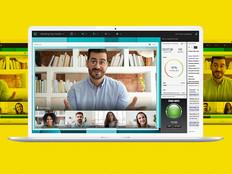How Educators Can Navigate Today’s Study Trends
Educators are well aware that today’s student base is much more diverse, demanding, and of course, digital.
While technology is meant to make things easier, it can be a bit tricky for teachers to stay in the loop. Here are some of the ways technology is changing how university students learn and succeed, as well as some tips on how teachers and higher education leaders can meet the challenge:
Personalized Data Helps Students and Professors Track Progress
In this age of social media, countable gratification — such as Facebook “likes” — motivates young people. When it comes to their education, data analytics systems allow them to keep track of their progress in a similar way.
In fact, students want their colleges to use their data for good. Digital collaborative tools increase engagement among their peers and professors, and access to adaptive learning boosts their confidence, reduces stress and makes them feel more prepared.
These data systems can also alert educators and advisors when a student is performing poorly early on so that they can intervene and guide the student in the right direction. Big Data can help everyone — students, advisors, admissions officers — and colleges can look forward to getting more use out of it.
Digital Course Materials Enhance Classroom Accessibility
Digital textbooks have proven to be more efficient than their print predecessors, with their lower cost, ability to be constantly updated and interactivity.
Although students still prefer to use laptops, by 2020 that could change, as mobile devices are becoming more capable of doing what laptops can do. Mobile devices are much faster than they used to be. The A10 Fusion chip inside the iPhone 7 is 120 times faster than the original iPhone chip, according to The Washington Post.
Apps are also driving mobile usage. With this in mind, university professors and administrators need to make sure their systems and resources are mobile friendly.
Students Clamor for Flexible Study Spaces
Libraries are shifting from places filled with dusty old books to collaborative spaces with open digital access. The libraries of the future are incredibly user-friendly — no manual required.
Today’s library staffs should have a variety of skills from IT to design to data science so that they can readily help students with their educational needs, and be constantly aware of users’ behavior and expectations.
New Digital Habits Bring New Challenges for Teachers
The role of the teacher is changing from provider of knowledge to facilitator, encouraging students to direct their own learning. We’re seeing the student becoming the teacher, being more involved in the planning process and deciding what and how they want to learn.
Teachers need to think outside the box and use technology in new and innovative ways. Cloud computing, mobile learning, bring your own device, data analytics, open content and virtual reality all directly correlate with improved student learning. But to make all of those things work, teachers need support and it’s up administrators to find the funding and to train their staffs accordingly.
There are also several tools designed to support teachers such as social learning networks and electronic portfolios that allow them to connect and discuss methods and practices. Helping our students succeed is a community effort, and if everyone’s on board, it can run much more smoothly.








